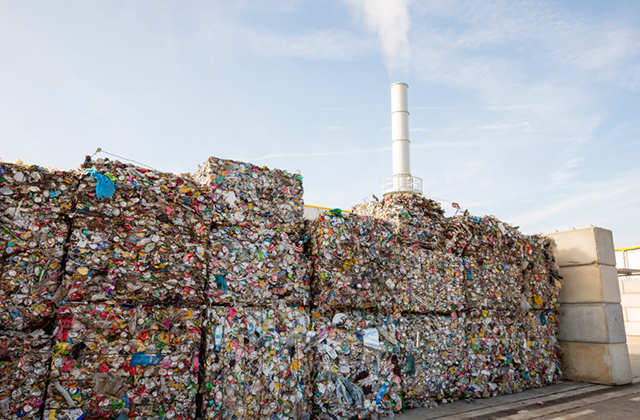Office rubbish removal Sydney takes pride in each job large or small scale kind of business. Electronic-waste (or e-waste) is a collective name for trashed electronic items like obsolete PCs, laptops, fax machines, cell phones, batteries, consumer electronics etc. As we are about to see, it is fearfully difficult to dispose off e-waste safely since it is loaded with several highly toxic (poisonous) and harmful substances such as lead, mercury, cadmium, hexavalent chromium (chromium VI), polybrominated flame retardants etc. that are not found in other forms of human waste. The lightning speed of growth of the Information Technology (and now mobile telecom) industry is leading to fast-growing piles of e-waste worldwide, particularly in developed nations, and unless they are quickly and safely disposed off, e-waste is going to take its huge, fearsome and absolutely irreversible toll on all life and the environment soon.
Now comes the question, why is it such a big problem to get rid of e-waste? Isn’t it just as easy as getting rid of other forms of human waste? The answer is a very blunt NO! E-waste does not lend itself to current forms of municipal waste disposal i.e. by practices such as landfilling and incineration. Here’s the reason why. Metals lead, mercury and cadmium (all of which are found in e-waste) leach out of landfills, leading to serious soil and groundwater pollution. Incineration (or waste destruction by burning), on the other hand, is crippled by other limitations. Typically, the incineration process creates slag, fly ash, flue gas and filter cake. When e-waste is incinerated, the burning of the plastics component generates highly toxic dioxins and furans while high concentrations of metals, including heavy metals are left in the slag and fly ash. Hence the incineration method results in dangerous air pollution and hands us another toxic by product at the end – slag and fly ash! In other words, it gives us another waste problem to deal with, without really solving the original one! Safe e-waste disposal requires use of specialized mechanical and chemical processes by which recyclable components like mercury, gold, copper etc. are first recovered and the residual matter is chemically treated and rendered harmless to life before being disposed off in landfills/incinerators.
As mentioned above, the major toxic components of e-waste are 1. Lead 2. Cadmium 3. Mercury 4. Hexavalent Chromium 5. Plastics & 6. Poly-brominated flame retardants. The major health and environmental hazards caused by each are described below, in brief. (Note: The author has taken sincere efforts to present the hazards (below) in DESCENDING order of severity but makes no claim (or guarantee) of accuracy)
LEAD(*): (A) Severely affects central and peripheral nervous systems (one extreme hazard being impairment of brain development in children) (B) Adversely affects blood, kidneys and the endocrine (or hormone) system (C) After crossing a threshold limit of concentration in the environment, has acute and chronic toxic effects on plants, animals and micro-organisms
CADMIUM(*): (A) Cancer of lung and prostate (B) Kidney damage as cadmium accumulates in the kidneys and acts first on it
MERCURY(*): Brain Damage in humans (in the case of developing fetuses causes mental retardation, incoordination, blindness, seizures, inability to speak etc.). (Mercury enters humans through the food chain, particularly via contaminated fish. This happens when the mercury contained in e-waste dumped into oceans/ rivers/lakes is consumed by fish and other aquatic micro-organisms)
HEXAVALENT CHROMIUM (Chromium VI)(*): (A) Allergic conditions even if consumed in small quantities e.g. asthmatic bronchitis (B) Damages the reproductive system in males (C) May cause DNA damage.
PLASTICS: Burning of plastics generates highly toxic dioxins and furans (exact hazards have not yet been publicly made known)
POLY-BROMINATED FLAME RETARDANTS(*) (PBDEs or Poly-brominated Diphenylethers): (A) Endocrine (hormone) system disruption-particularly reduces levels of thyroxin, an essential hormone needed to regulate the normal development of all animal species, including humans (B) Other neuro-toxic effects in infants and the young of animals.
For reliable and detailed information on the hazardous effects of any of the above substances visit the Agency for Toxic Substances and Disease Registry (ATSDR) website and navigate to the name of the substance you want to know more about via the A-Z index provided. For example, to read about hazards arising from Lead, click on ‘L’ (for names starting with L) and then select ‘Lead’ from the sub-menu displayed
Is there any way you can help? Of course! Any control or mitigation of the problem starts only when individual users of electronic goods (that means you and me!) stand united the world over and firmly say NO to unsafe e-waste disposal.
And finally comes the question ‘how’? One major point to note and take advantage of is that the lion’s share of e-waste is comprised by obsolete Personal Computers (PCs)/Laptops/Notebooks and accessories. Major computer manufacturers like IBM, HP,Dell,View Sonic, Sony, Panasonic,Gateway & Acer, already aware of the dangers of e-waste, are offering to ‘take-back’ their used computers (either free or at a small fee) so that you can return end-of-life computers/peripherals back to them for safe disposal. Your worries about e-waste disposal, therefore, end when you return obsolete computers to the manufacturer you bought them from! Period.
So, step 1 is: DO NOT BUY from a manufacturer that does not offer to take-back your PC or cellphone when it turns obsolete! A noted, environmentally responsible organization that performs watchdog services in the area of electronic trash control is the Silicon Valley Toxics Coalition(SVTC). SVTC maintains a ‘computer manufacturer score-card’ that ranks the top 10 computer manufacturers on observed responsiveness/commitment to environment related issues. It is highly recommended that you buy in future from a manufacturer that appears on this list AND/OR
Step 2: Make sure the PC (or electronic product) you buy is ‘EPEAT’ ( Electronic Product Environmental Assessment Tool of the US Environmental Protection Agency) registered or evidence exists of adherence to the IEEE 1680 environmental performance standard set by the Institute of Electrical and Electronics Engineers Inc., USA ( IEEE )
Step 3: Pass the word along among friends/colleagues/family members.
Step 4: Look for terms like e-waste and RoHS (RoHS, which stands for ‘Restriction on the use of Hazardous Substances’ is the equivalent of e-waste control measures set up in European Union (EU) countries) in the news and keep upto-date with developments on this front.
Step 5: Be aware that governments of developed countries (including the USA), well aware of the consequences, are indifferent to the existing backdoor practice of gifting/selling obsolete PCs to poorer nations(also read footnote 1). The e-waste problem is thus conveniently passed on to poorer nations while the exporting countries go scot free (they save on costs of proper disposal as well as face lesser criticism at home about responsibility issues as the underlying cause itself gets ‘exported’ and the barest few issues that might crop up remain). This is unjust! Confront your government with the truth. Make them call off their bluff! Make them sit up and take action!!
Were already late, so don’t delay, start on your action right from today… !!!
(1) In this connection, it’s worth noting that the 1992 United Nations Basel Convention, that governs global cross-border movements of hazardous wastes, places strict regulations on the trade/export/import of e-waste between countries. While many nations in the world are signatories to this legally binding international treaty, the USA, by being a signatory (but un-ratified to date) is a prominent exception.
Add to this the fact that the US is the biggest producer and exporter of e-waste in the world and you’ll have to admit that the USA alone, nearly 18 years after 1992, can continue with delays and postponements even in the matter of a crucial, global issue like e-waste possibly because, when it comes to the USA, even in our times, ‘might is still right‘ or ‘while all nations are equal, some are more equal than the others‘.
The author is an Independent Information Technology (IT) consultant, based in India. He is passionate about the latest developments in the IT & Communications industry, which he constantly strives to keep pace with. One of his primary sources of technology information is the IEEE ( http://www.ieee.org ), where he has been a member since 1999. He also gets technology inputs from sources such as CNN, Time Magazine, BBC, NASA, the Computer Society of India, Cyber Media Publications (India), Engineering for Change etc. as well as by periodically attending conferences, webinars and seminars.
Article Source: https://EzineArticles.com/expert/Abraham_R_Chacko/482546
Article Source: http://EzineArticles.com/3434748



